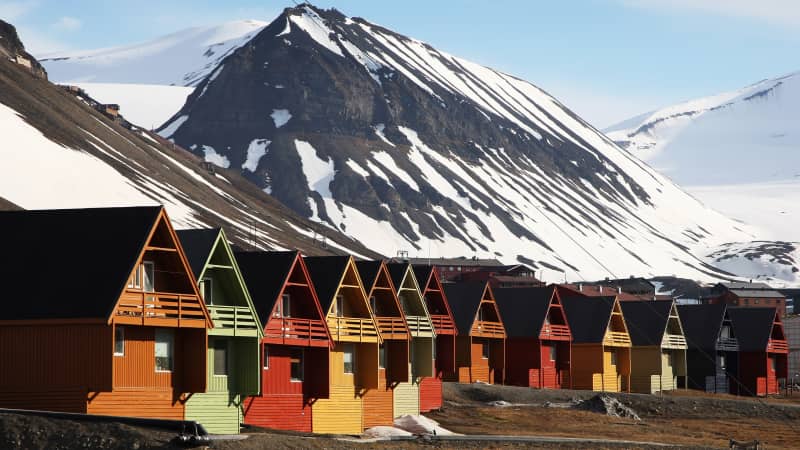Idiotic TV shows and all the latest apps bumming you out on the 21st century? Ready for some “me time” on the world’s remotest islands?
Forget golden sands and swaying palms — the reality of solitude is different as these distant landfalls demonstrate.
1. Tristan da Cunha

Courtesy Tristan da Cunha Tourism Office
1,750 miles from South Africa
The British island group of Tristan da Cunha stands profoundly alone in the South Atlantic. The nearest landfall is South Africa, 1,750 miles east, and to the west, South America is more than 2,000 miles.
It’s the world’s most remote inhabited island chain — so precariously occupied that when a volcanic vent erupted in 1961, the whole population was evacuated to England.
Reaching Tristan da Cunha: This is no easygoing excursion.
To quote the official website, “There are no package tours for independent travelers, no hotels, no airport, no holiday reps, no night clubs, no restaurants, no jet skis nor safe sea swimming.”
All visitors need to clear their arrivals in advance through the Island Council, and they also need to obtain a police certificate. (A 40-day wait is typical.)
2. Bear Island

Longyearbyen is the seat of Norwegian local administration in Svalbard.
Chris Jackson/Getty Images
400 miles off Europe’s north coast
Bjornoya, better known as Bear Island, is the southernmost island in the Arctic archipelago of Svalbard, 400 miles north of mainland Europe — but only on paper, given that it’s almost 150 miles south of the Norwegian island chain with which it’s lumped.
Reaching Bear Island: Getting to the heart of Svalbard is a relatively simple matter — there are daily flights from Oslo and Tromso to Svalbard’s capital, Longyearbyen, on the west coast of Spitsbergen.
3. Bouvet
1,000 miles from Antarctica
Tristan da Cunha is the remotest inhabited island in the world — now, welcome to its uninhabited, far bleaker counterpart.
Its cliffs are sheer. It’s almost entirely covered by a glacier. In winter, its seas are pack ice.
And its nearest neighbor is Antarctica, 1,000 miles to the south. In short, idyllic.
Reaching Bouvet: The entire island is a nature reserve — so unless you can make a compelling case for visiting, you’ll be blocked by Norwegian authorities.
Get permission, and it’s now a simple matter of finding a research vessel, quickly mastering a valuable skill such as arctic geological surveying or marine biology and then getting someone to land you via helicopter. (There are no ports or harbors.)
If all else fails, try becoming an amateur radio enthusiast: In 1990, a multinational expedition of operators spent 16 days on the island.
4. Bishop Rock
30 miles from England
Regarded by Guinness as the world’s smallest island with a building on it, Bishop Rock stands at the end of Britain’s Isles of Scilly, where coastal waters give way to the fury of the Atlantic.
In 1847, engineers started building an iron lighthouse there — and it washed away in a storm. Its extraordinary successor, first lit in 1858, stands to this day.
5. Boreray
60 miles off mainland Scotland
Love the Scottish islands, but want something with a little more bite? Head west of the Outer Hebrides, and you’ll find the archipelago of St. Kilda, 40 miles into the Atlantic.
Reaching Boreray: Since Boreray comes under the protection of the National Trust for Scotland, you need its permission to visit.
Then? Lots of time and lots of luck — with a rugged shoreline and savage sea swell, this isn’t an island built for landings.
6. North Sentinel Island
400 miles from Myanmar
North Sentinel is one of the 572 islands making up the Andaman chain in the Indian Ocean’s Bay of Bengal.
It’s surrounded by dangerous reefs, but North Sentinel is intimidating because of its inhabitants. The Sentinelese want nothing to do with the modern world and have repeatedly rebuffed attempts to make peaceful contact.
7. Rockall
270 miles from Ireland
If you think Boreray sounds forbidding, try sailing 187 miles west of it. Rockall is the tip of an extinct volcano reaching 20 meters (about 65 feet) above sea level, in seas with waves recorded as high as 29 meters (95 feet).
In 1955, the British Empire, in its final territorial acquisition, seized Rockall — allegedly due to fears the Soviets would build a missile battery on it.



